Lotte Lehmann
also known as Charlotte Sophie Pauline Lehmann
Lotte Lehmann was a German singer. Throughout her career she sang with the greatest conductors: Nikisch, Klemperer, Thomas Beecham, Franz Schalk, Richard Strauss, Bruno Walter, and Arturo Toscanini.
Background
Lotte Lehmann was born in Perleberg, Germany, the daughter of Carl Lehmann, a minor official of a benevolent society, and Marie Schuster. Her full christened name was Charlotte Sophie Pauline Lehmann.
Education
After elementary education in Perleberg and studies at the Ulrich Lyceum in Berlin, she enrolled for private vocal training at the Royal High School of Music in Berlin. She and the distinguished teacher Etelka Gerster were incompatible, and it was not until she began to study with Mathilde Mallinger, a star of Bayreuth and Berlin who had created Eva in Die Meistersinger, that her voice was properly placed.
Career
Lehmann was offered an engagement with the Hamburg Opera, where she made her professional debut as the Second Boy in Mozart’s Die Zauberflöte on September 2, 1910. Stage experience in a multitude of small parts, and singing under such eminent conductors as Arthur Nikisch and Otto Klemperer, developed her as an artist. A real breakthrough came in 1912 with her success in her first major role, Elsa, in Lohengrin. After this came other leading parts: Sieglinde in Die Walküre, Eva in Die Meistersinger, Micaela in Carmen, Elisabeth in Tannhäuser, and many others.
In 1916, Lehmann moved to the Court Opera in Vienna. After a successful debut in August as Agathe in Der Freischütz, in October she became a star when she created the role of the Composer in the premiere of the revised version of Richard Strauss’s Ariadne auf Naxos. This began her long association with Strauss, who had requested her for the role and whose guidance and coaching became a major influence on her career. In addition to Ariadne, she sang in the Vienna premieres of Die Frau ohne Schatten (1919), Intermezzo (1924), and Arabella (1933). In 1914, Lehmann had begun her international career by singing Sophie in Strauss’s then-new Der Rosenkavalier in London under Thomas Beecham; that fall in Hamburg she added the trouser role of Octavian, and in 1924 in London she sang what became her greatest part, the Marschallin. It was her role in this opera for the rest of her career, and the role in which she sang her farewell to opera in 1946. Lehmann’s years in Vienna saw a succession of triumphs. She sang an immense number of roles–the variety and range of which her later American career gave little indication: Puccini and Massenet, Mozart and Tchaikovsky, as well as Beethoven, Wagner, and Strauss.
She and the Moravian soprano Maria Jeritza divided the loyalties of the knowledgeable Viennese public. Lehmann had an appeal that went beyond the glowing beauty of her voice. She even managed to convert her vocal defects–and she was the first to admit that there were defects–into strengths. For example, her breathing was flawed, but she managed to turn the necessity of snatching a breath into a dramatic asset, creating an illumination of character from a moment of physical frailty. And she was able to do this on the recital platform as well as on the operatic stage, touching her audiences with the sense that they were hearing an aspiring, though imperfect, human being, like themselves.
Lehmann moved beyond central Europe in the 1920’s with a season in South America (Buenos Aires, Montevideo, Rio, Säo Paulo) in 1922, London in 1924 and annually thereafter through the 1930’s, Paris in 1928, and Brussels and Stockholm in 1929. In 1926 she began the series of appearances at the Salzburg Festival that continued until the Nazis took over Austria in 1938.
In October 1930 she made her American debut, not at the Metropolitan Opera in New York City, where her rival Maria Jeritza reigned, but at the Chicago Civic Opera, whose company was then the equal, in artistry and opulence, of the Metropolitan. As Sieglinde, Elsa, and Elisabeth she convinced the American critics that she was a first-rank German lyric soprano, and it was in these seasons (1930 – 1932) that she began the song recitals in which she continued to enchant audiences after her operatic days were over.
With the rise of Hitler, Lehmann’s German career effectively ended, for while she was not Jewish, and indeed had been invited by Hermann Göring to sing in Berlin, she preferred not to perform where Nazis ruled. After 1938, Austria heard her no more. She became an American citizen in 1945, eleven years after she made her Metropolitan debut following the departure of Jeritza from the company. She sang there for twelve seasons, until a final Rosenkavalier in February 1945. Her last operatic appearances were in the same work with the San Francisco Opera in 1945 and 1946. A reduced operatic schedule was balanced by an increased number of lieder recitals, where the purely vocal demands were not as great, and where her deepening interpretative insights increasingly illuminated the rich world of song for an ever more affectionate public. No singer did more than Lehmann to bring a knowledge of German song to American audiences.
On February 16, 1951, just a few days before her sixty-third birthday, Lehmann sang her farewell concert at Town Hall in New York City. Though there were later a few recitals elsewhere, it was in effect the end of her singing career. After Lehmann retired to Santa Barbara, California, she became a distinguished teacher of such renowned pupils as Marilyn Horne, Grace Bumbry, Carol Neblett, Jeannine Altmeyer, Maralin Niska, and Janet Baker.
When she returned to Austria in 1955 for the reopening of the State Opera, where she had sung so brilliantly for so many years, the outpouring of affection of the Viennese public proved that their most beloved singer had not been forgotten. In 1962 Lehmann helped stage the Metropolitan revival of Der Rosenkavalier with Régine Crespin in the role of the Marschallin. She painted, sculpted, wrote, and recorded recitals of poetry, exhibiting tireless creative energy. With advancing years, declining strength necessarily limited her activities. Lehmann died in Santa Barbara.
Achievements
Works
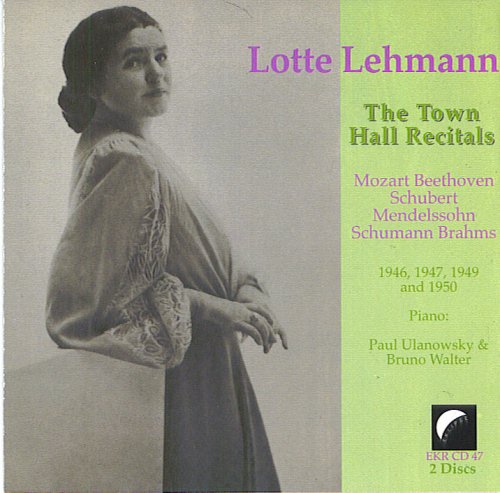
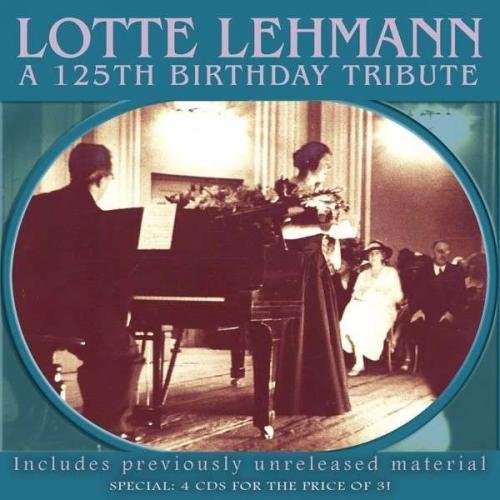
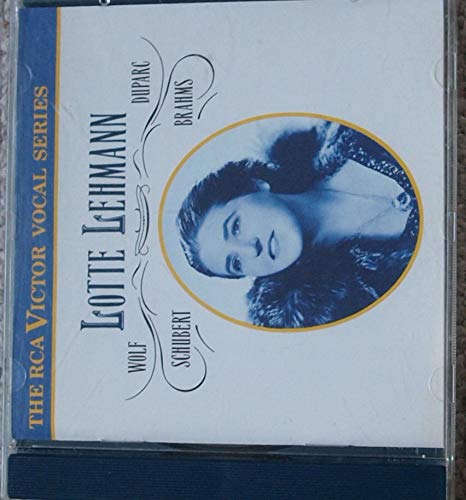
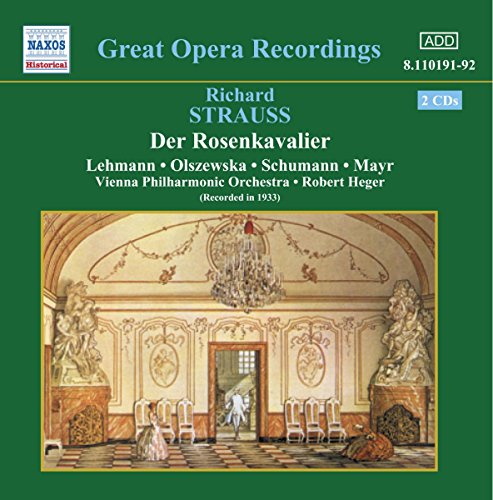
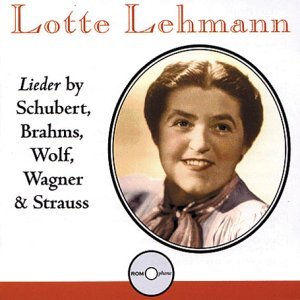
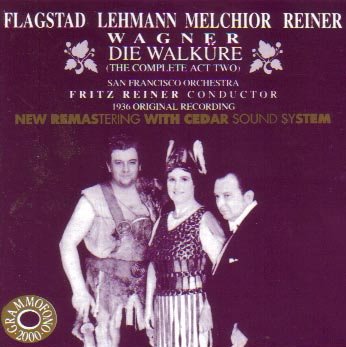
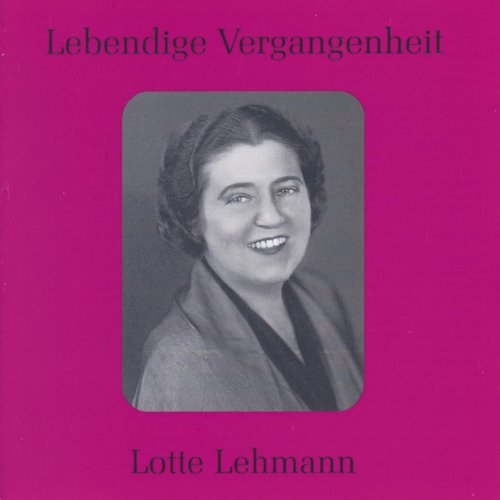

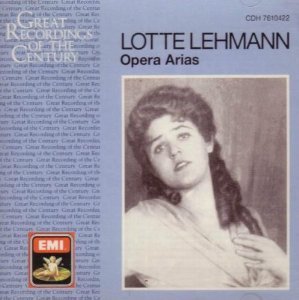
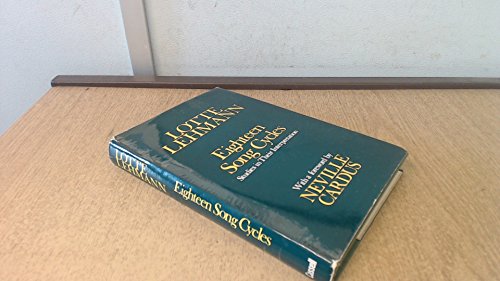










-
- Wagner: Die Walküre, Act 1 (This CD is not just a ”must” for all true Wagner devote…)
- Eighteen song cycles: Studies in their interpretation; (Dust jacket notes: “Lotte Lehmann is the last – and argua…)
- Der Rosenkavalier (NAX 8110191; NAXOS – Germania; Classica Lirica)
- Lotte Lehmann: A 125th Birthday Tribute (A marvelous collection of ‘rarities’. Selected by produce…)
Connections
On April 28, 1926, Lehmann married Otto Krause. They had no children.
References
- Lotte Lehmann, 1888-1976
- Lotte Lehmann: A Life in Opera and Song : The Authorized Biography
- Lotte Lehmann: “Sie sang, dass es Sterne rührte” : eine Biographie (German Edition)
- Never Sang for Hitler: The Life and Times of Lotte Lehmann, 1888-1976
- Lotte Lehmann in America: Her Legacy As Artist Teacher, With Commentaries from Her Master Classes (Monographs & Bibliographies in American Music)
